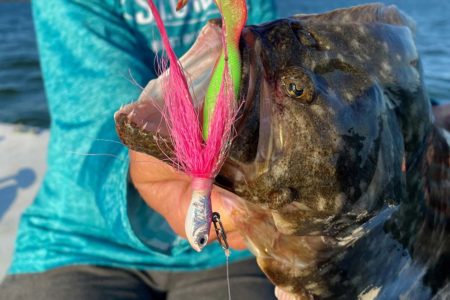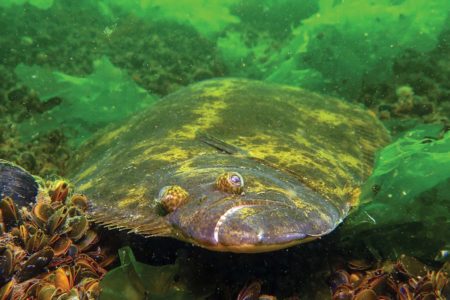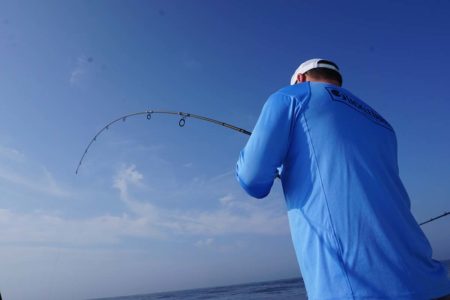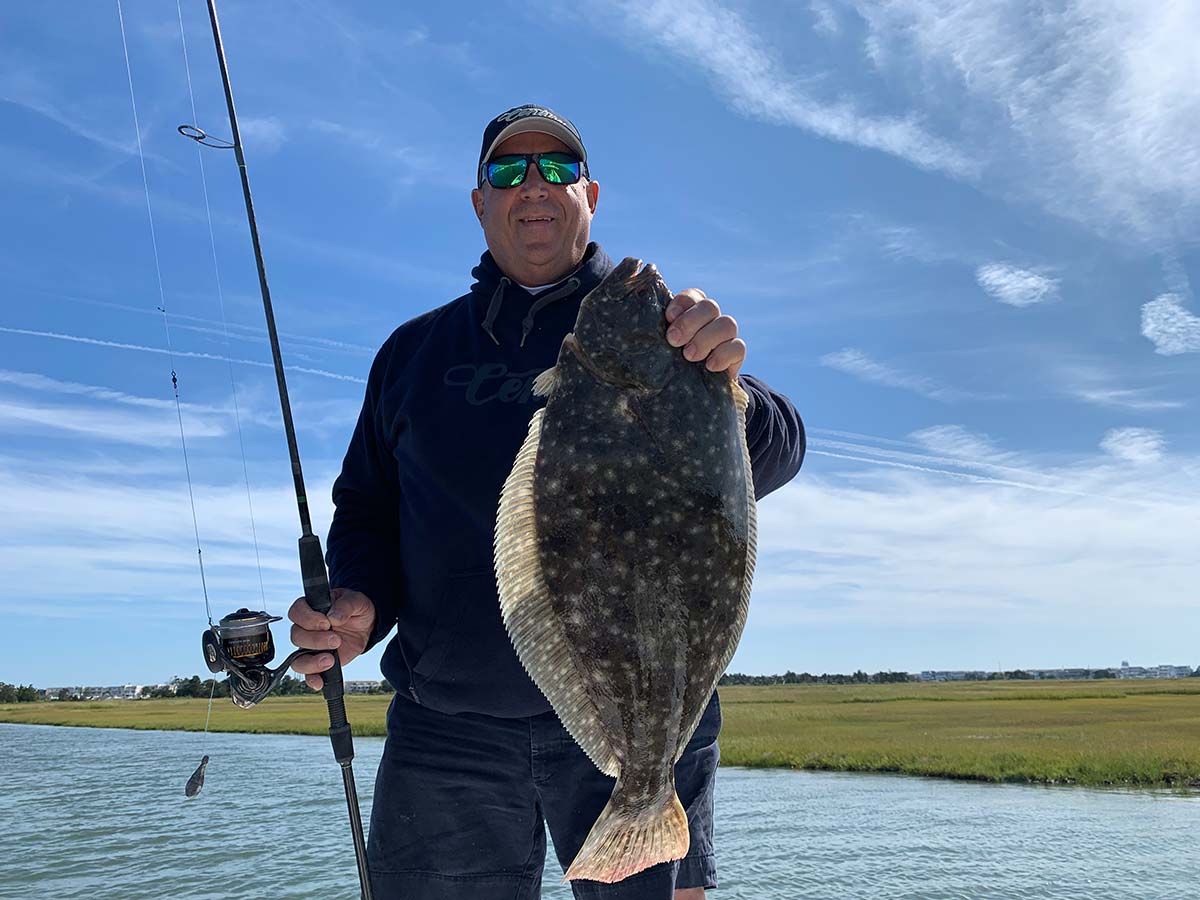
Don’t cruise over fish to find fish, not when they’re close to port.
The back bays and rivers of New Jersey see their most intense pressure early in the fluke season, with May into early June seeing the summer flounder fishery in full swing throughout the region.
Warming air and water temps welcome an open fluke season so we can get out there and target one of our favorite inshore species. The fish pushed heavily into the back bays and salty rivers following the warming waters and active bait inside of our estuaries. Minnows, spearing, and several species of shrimp and worms. These fish will become even more active as the water warms, and eventually they will begin to push out to the reef sites later in the month and into July.
Fish The Tides
Early season finds the angle of the sun changing. This means that we get more hours of sunshine each day. If we have a high tide around 6 a.m., the tide begins to ebb and reaches the bottom of the tide at around noon, which means that the dark colored mud bottom on the shallow water flat is absorbing the warmth of the sun. As the tide continues to fall, then begins to rise, the exposed mud bottom warming nicely.
As the tide comes in and covers the flat, the warming water floods into the shallow estuary while activating the entire ecosystem. This simple reason explains why the fish often chew much better on the outgoing tide early in the season than the colder incoming tide.
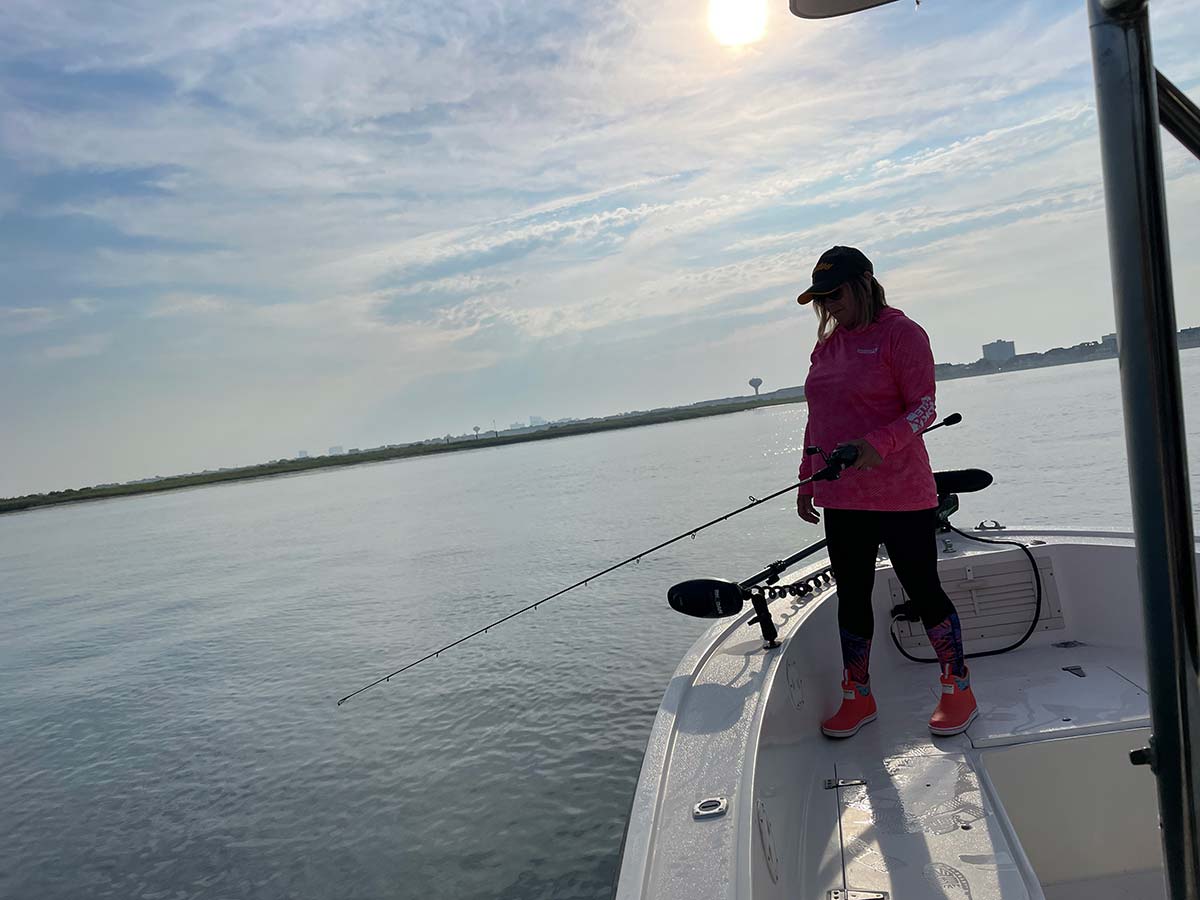
The colder water will make them sluggish where they will often hit the bait, but maybe you snag the fish instead of hooking them in the mouth. They are striking the bait because it looks good, but they are just not eating it the right way. When conditions improve, they will hopefully chew.
Fishing in shallow water anywhere between 5 feet and up is a much different presentation than what we do while fishing the reefs come July. Mainly drifting in the protected backwaters means slow and controlled drifts. Your presentation is most often a horizontal one, meaning using light jigheads to keep your baits near the bottom as you drift, but not necessary to constantly drag the bottom, but to bounce off of it every so often.
Jigheads between 1/8 and 3/4 ounce get the job done for me; my favorite is 3/8 ounce when conditions allow, rigged with 25-pound Tsunami fluorocarbon leader. Tie the jig on with a Rapala knot, then 14 inches above the jig tie a dropper loop. Put a 6/0 baitholder hook on your dropper loop and bait up. I like 4- or 5-inch Gulp Swimming Mullet on the jig, and a 4-inch Gulp shrimp on the teaser hook. The shrimp looks like a mantis shrimp and the inshore fluke just gobble them up. New Penny or Natural color works very well for us.
Channel Your Energy
When the tide is moving in either direction, try looking for a channel that has the wind blowing across it from side to side. For example, this way the tide takes you north, and the wind pushes you easterly, so you can work both sides of the channel, while also covering ground looking for a concentration of fish. When you get bites quickly, shorten your drifts to pound this small area of bottom that is holding fish.
Drift channel edges on the incoming tide, while on the outgoing tide always keep an eye out for small outflows from flooded marsh ponds. A small trickle into a channel is like natural chum pot dropping minnows, spearing and shrimp into the channel. Always make a few drifts here.
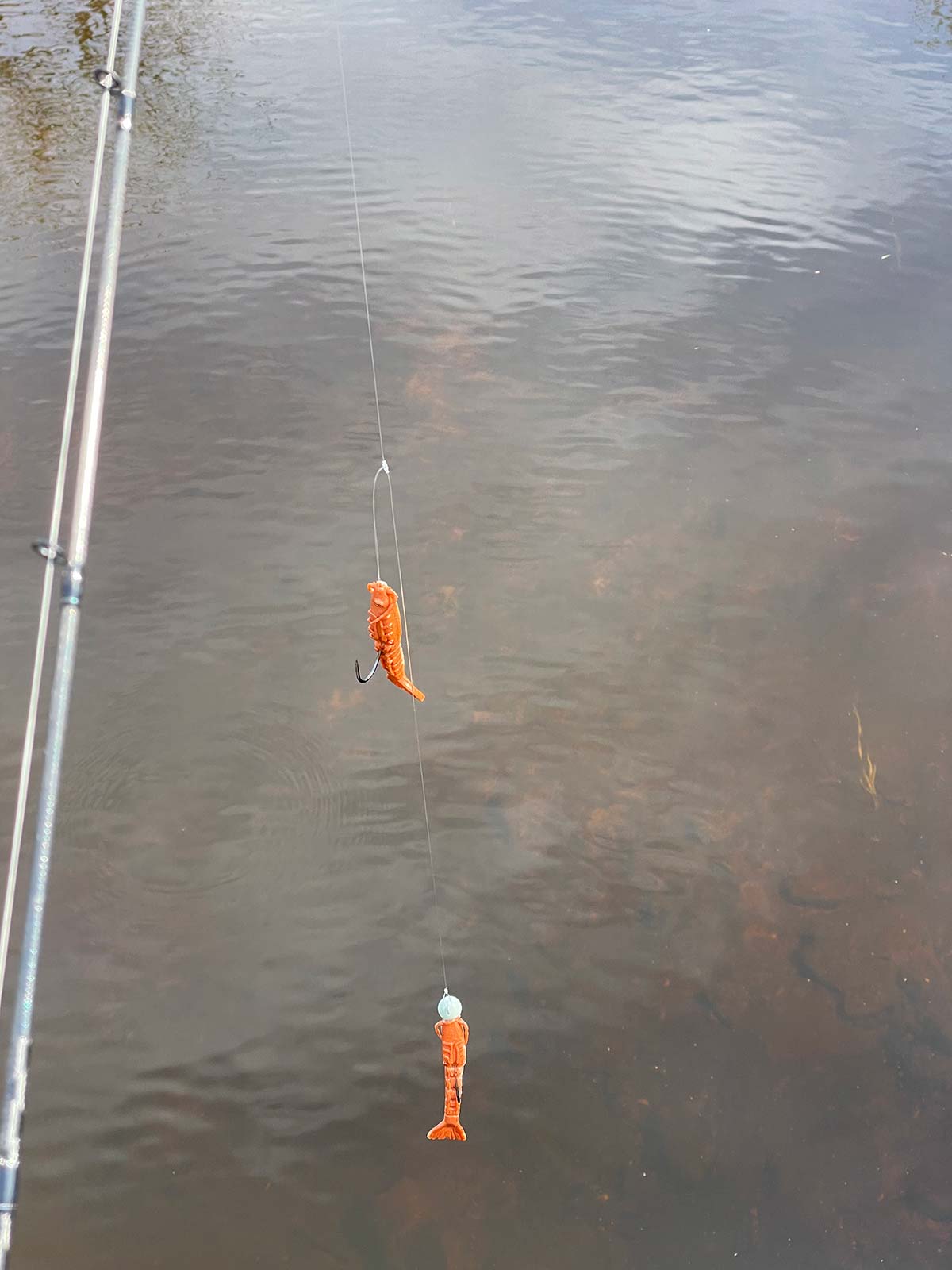
Slack tide is a favorite time to focus on huge fluke! Because you are moving much less, try to get on top of some fish holding structure while keeping your presentation straight up and down bouncing on the bottom. I have a 40-foot-deep hole that I like to fish this way. Deep water sedge banks with very rough bottom are a great place to fish during this slow-moving time of the tide. I also like to fish next to a bridge that has rubble under it. Fish the sand right next to the rubble on the down current side of the bridge using a heavier jig here and keep it moving. Cover ground moving along the rubble line until the tide switches completely, then get back to working the channel.
You will cover a lot of water while drifting if you fish two rods, one with a half-ounce jig straight down off of the rear corner, another lighter outfit rigged with a quarter-ounce jig casted off of the side of the boat maybe 30 feet off of the side. As the lines tighten up as you drift you will cover the bottom with a very nice presentation. By adjusting the weight of your jigs, you can literally cover the bottom like a carpet; then when you get multiple bits in an area, you can work the area over again looking for more and larger fluke.
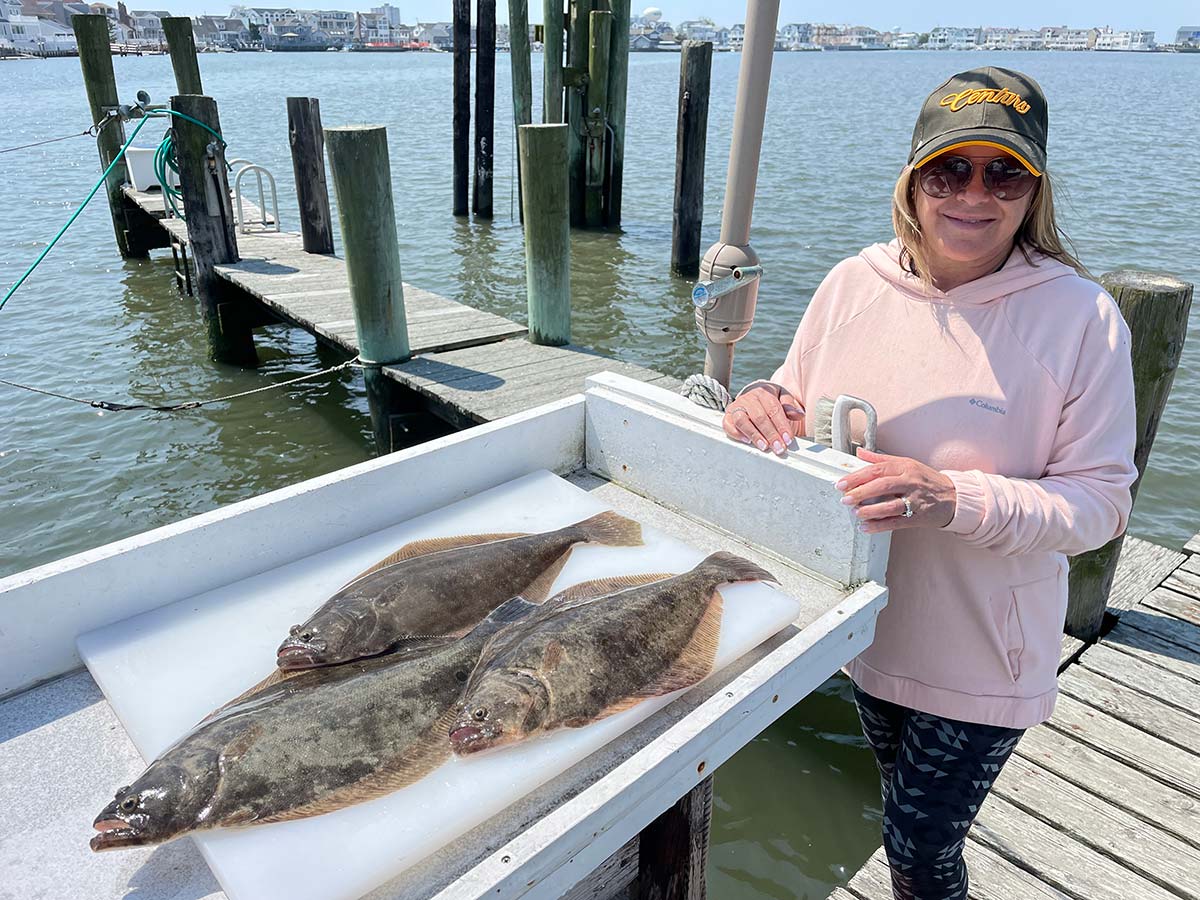
If you are catching loads of small fish, try using larger baits, perhaps 6-inch Gulp Mullet or Grubs. Keep them moving until you see a hit; often this will look like the rod tip just bends over. When this happens try lowering your rod tip to give the fish some slack. When he grabs the bait, he expects it to stop moving, at which time he will engulf your bait. When the slack comes tight and you feel the weight of the fish, set the hook and its game on!
| THE FLUKE FIGHT |
| If you want to land more fluke, be sure to adjust your fish fighting skills so that you do not pump the rod. Doing so will cause an angler to lose many good sized fish. Keep the tip of the rod engaged and let the rod do its job. Reel the fish in slowly as you feel the weight of a heavy fish. Stay calm especially when you know the fish is very close; avoid allowing the fluke to get to the surface (versus the net), as it will typically freak out and often spit the hook. If you’re taking a friend fishing for the first time, show them how the netting process works before you need them to actually net your fish out in the bay where it matters most; practice makes perfect. |
Very light gear adds to the fun of this fishing. I use a Century Demon spinning rod with 15-pound braid for my light rod. Slightly heavier I like a Weapon Jr. with 20-pound braid for fishing my heavier jigs straight down. These rods are crazy light but extremely sensitive and powerful. A properly balanced rod with a light tip and good lifting power in the middle will make a great fluke rod for inshore work.
My rod in its holder as we drift along. The tip gives a sharp dip, then it goes well over and it stops. A second later the big fish moves and the rod lets out a few thumps. Pick up the rod and drop the tip giving the fish a small amount of slack. As the lines comes tight, point the tip to the fish. You feel the weight of the fish, sharply snap the tip upward to set the hook. This is one of my favorite ways to take my family and friends who don’t fish much out of the water. The memories these trips will make last a lifetime, yours and theirs.

